BBQ Meatballs: Smokey, Juicy, Cooked to Temp
When I was in cooking school taking the unbelievably delicious class called “Meats and Seafood,” our instructor talked to us about the logistics of running a catered buffet. “One of the best things you can put on a buffet,” he told us, “is a good meatball. They’re easy to make and people go crazy for them.”
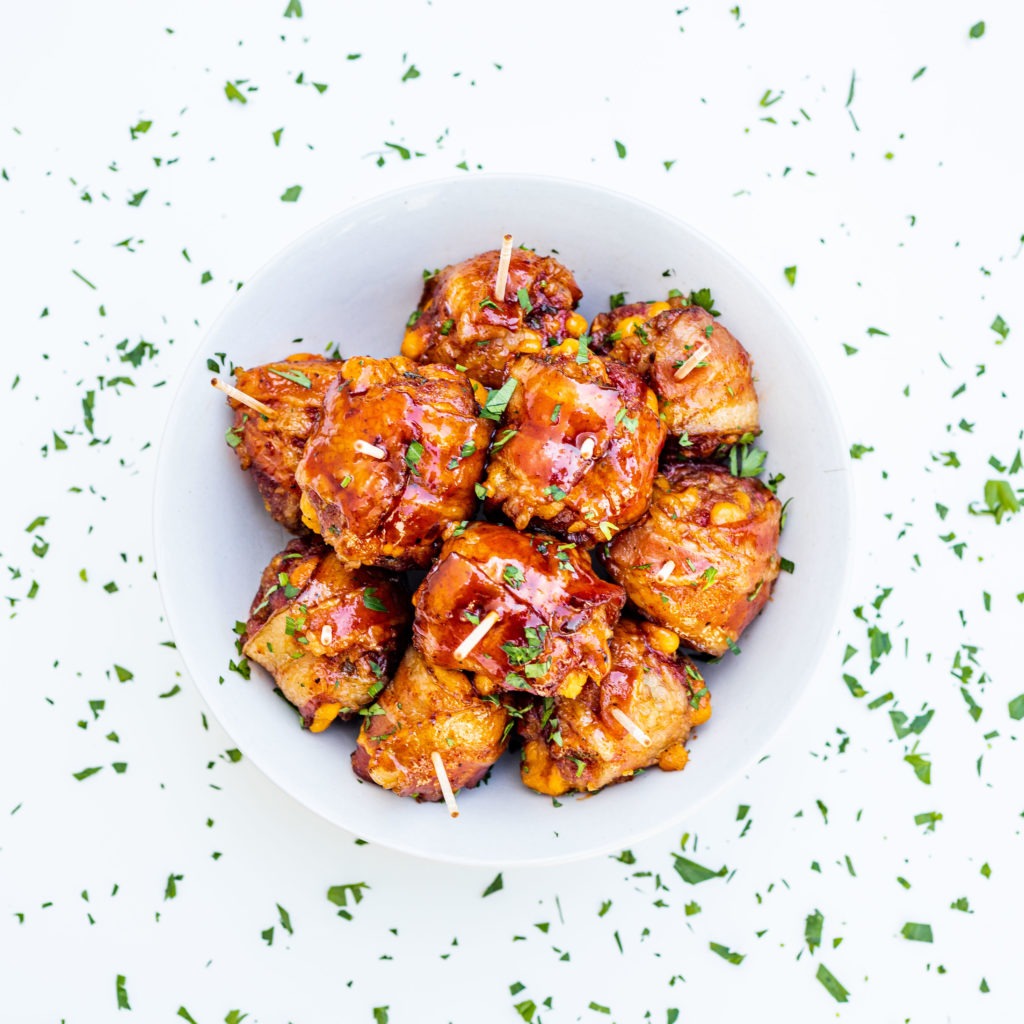
And, boy, was he right! There are few things as appealing and fun to eat as meatballs. Whether they top a mound of al dente pasta, fill a sub sandwich, or are just eaten with a toothpick off of a plate, meatballs are pure enjoyment, especially when they are cooked correctly. Now, you may not be catering a buffet, but if you want to hand out something tasty to your friends around Halloween, and if you’re looking for a way to impress, my old Chef instructor’s advice still holds! In this post, we’ll be taking a look at what makes a good meatball, meatball critical temperatures, and a fantastic recipe for cheesy, spicy smoked meatballs from Susie Bulloch at Hey Grill Hey.
Homemade meatballs: an anatomy
Though they are filtered through many different cultures and flavor palates, most meatballs share a common basic structure: meat, seasonings, and binder. How these pieces come together determines the flavor and texture of your meatball. As such, it would be good for us to examine the parts of a meatball in turn.
Meat for meatballs
Choosing meat for your meatballs is all about both flavor and texture. Beef has a strong beefy flavor and tends to make meatballs that are a little tougher than some other meats. Pork usually brings more juiciness and often has more fat—a positive attribute in this case—than beef. Chicken will be dry unless it is ground from dark meat, and lamb tends to be quite lean but super flavorful. Older recipes often call for ground veal, which is fine if you can find it, and adds natural gelatin—good for moisture retention—to your mix.
Many a meatball is made of a mix of meats, an option that optimizes textural characteristics and flavors. if you develop your own recipe, play around with proportions and even try adding things like finely minced bacon. (Adding bacon or other fat is a good choice if your meat is lean. You want a ratio of about 80% lean to 20% fat for meatballs that stay juicy. See the section on temperatures below.)
In this recipe, a smoked meatball with plenty of flavor from the ingredients and the smoke, we’ll go with straight ground beef for the meat. The assertive beef flavor will play well and the relatively lower cook temp—275°F (135°C)—helps to minimize the chance of drying out that we would use pork as a buffer against.
Meatball seasonings
A fine meatball can be made with little more than salt and pepper, but an exceptional meatball might need a bit more of a nudge. Garlic and onion are common, and whether you choose to precook them or add them to the mix raw is a choice you can make based on experimentation and need.
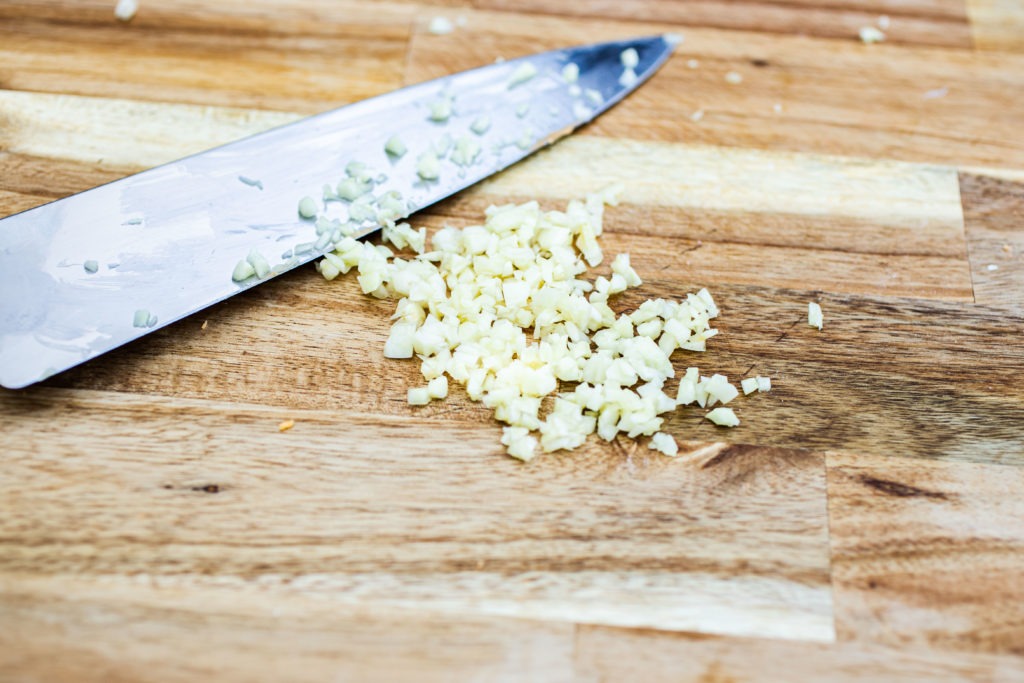
Of course, there can be other inclusions—known in the sausage-making world as internal garnishes. Shredded or chopped cheeses, fresh herbs, even nuts or raisins can be added to meatballs to add color, texture, and flavor. Be creative with your seasonings to create your own signature meatball, just be sure not to use so much garnish that you overpower the meat!

For Susie’s meatballs, were using finely diced jalapeño peppers and shredded or finely diced sharp cheddar cheese in addition to fresh garlic and steak seasoning. If you don’t like the spice of jalapeño, sub in a less fiery pepper.
Binders for meatballs
If you were to take a lump of ground meat, some salt and pepper, and a little garlic and squish it all up into a ball and try to cook it, a delicious meatball is not what you would end up with. Meatballs need binders. Binders hold the meat together by providing easily-accessible extra protein and/or something for the proteins to hold onto.
Most meatballs use eggs as a binder. The egg, which is mixed into the meat and seasonings, basically scrambles when cooked inside the meatball. You don’t see any scrambled egg, but what you get is a network of protein that is holding the whole meatball together. Milk (when included) also acts to some degree as a binder, adding extra protein to a meatball. (Though milk’s primary function is usually adding liquid to the meatball.)
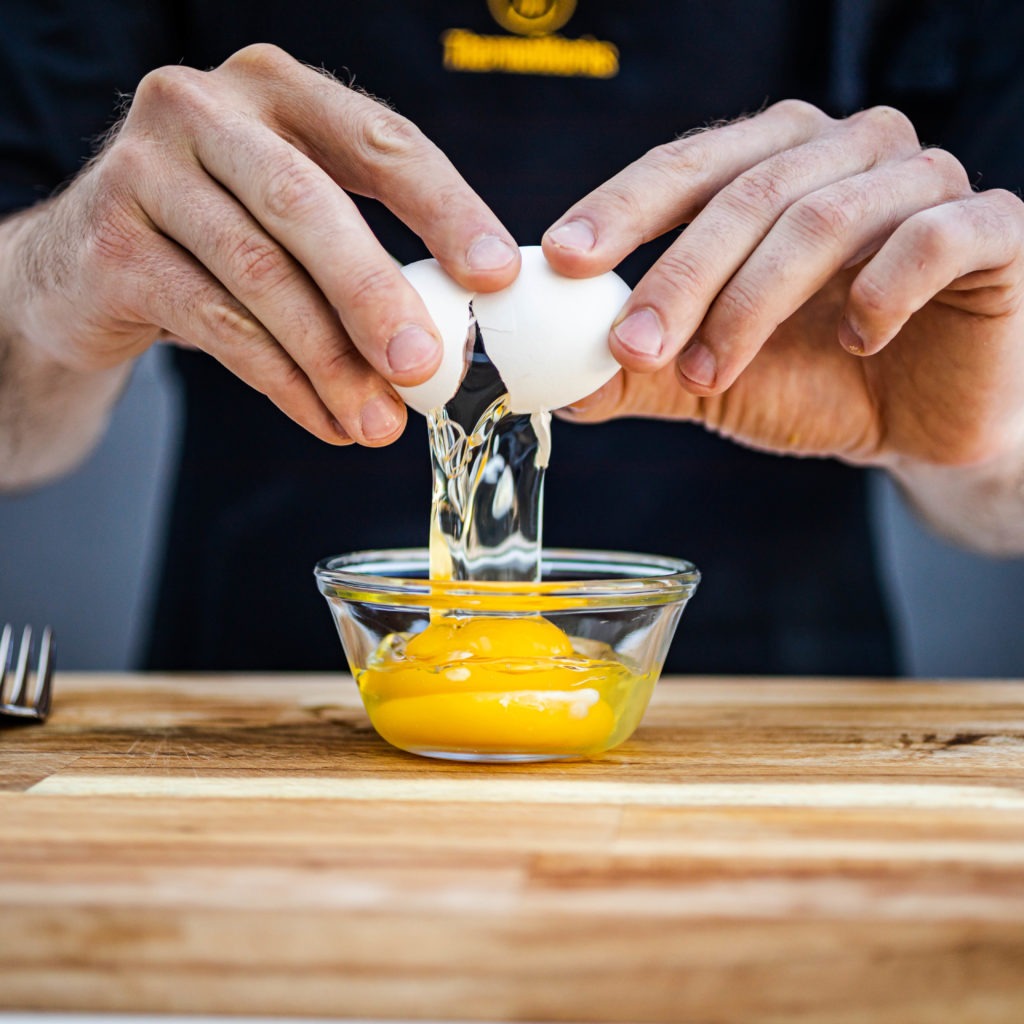
Breadcrumbs can also play an important part in meatball structure. Breadcrumbs help to retain moisture inside the ball, acting like little sponges to catch escaping juices, but also bind with milk (if used), egg, and meat proteins. The crumb structure provides a hold for proteins. They also play a role as fillers, which is not actually a bad thing. They make the meatball lighter, less dense, and more enjoyable to eat.
How to mix meatballs
Even if you get all your meat/binder/seasoning constituents just right, there’s yet another obstacle in the way of meatball perfection: mixing. If you read our post on making homemade bratwursts you may remember that it was important to mix the “batter” very well so that the myosin in the meat can form a sticky network. Well, in making meatballs, we generally want to ignore that advice. Meatballs should (often) be more tender, less springy and bouncy than a sausage. There are exceptions—Swedish meatballs are a bit more bouncy than a properly made Italian-American meatball. But in general, a more light-handed approach to mixing is preferred for meatballs.
To mix your meatballs properly, use your hands and mix the ingredients until they are just combined. You obviously want to make sure everything is well incorporated, but nothing more than that. To avoid overmixing, some people mix all their non-meat ingredients together very well before incorporating the meat. It’s not a bad idea, but is not, strictly speaking, necessary. But remember that unless you want a meatball that can roll off the table, across the floor, out the door, into the garden, and under a bush, then don’t mix it hard!
Meatball critical temperatures
At last, we come to the matter of temperature, and this really is key to your meatball success. Meatballs are, of course, made of ground meat, and ground meat is a harbor for pathogenic bacteria. That means that they need to be cooked to a temperature that fully reaches 165°F (74°C). To make your meatballs safe to eat, be sure to check them with a fast and accurate instant-read thermometer like the Thermapen®. Measure the meatballs by piercing them through and pulling the probe slowly out through the meatball, checking the lowest temperature visible on the readout.
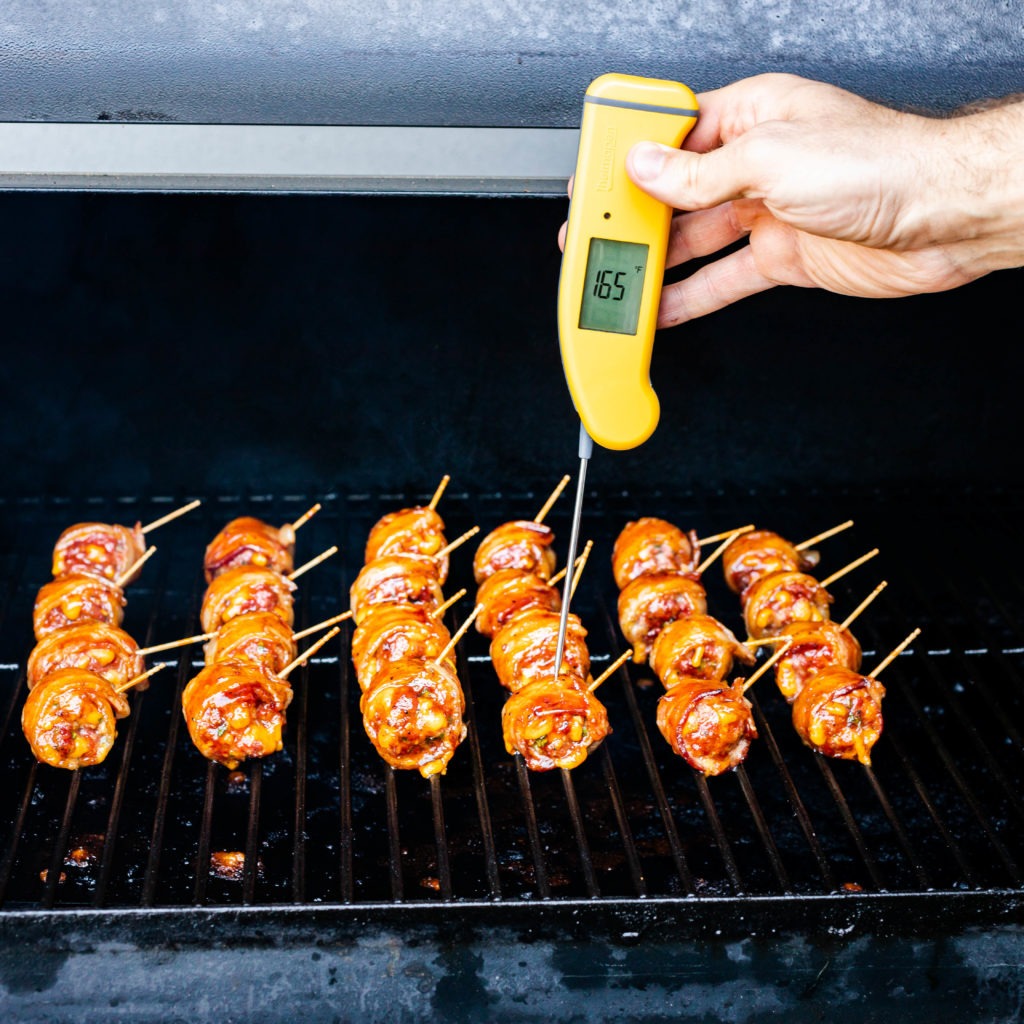
You know that this blog does not like to encourage cooking things until they are well done, but if you’ve assembled your meatballs properly with binders and moisteners, etc., then you should be okay cooking them until 165°F (74°C) without drying them out. Smoked meatballs should experience very little carryover cooking. However, even the moistest meatball will succumb to the heat if allowed to cook much hotter, so check your meatballs with your Thermapen regularly.
A note on searing meatballs
Most meatballs are seared as a part of their cooking process. Whether under a broiler or in an oiled skillet, a good sear improves the flavor of a meatball and gives it an appealing crust. Meatballs are then finished in a sauce or just cooked through in dry heat until they reach 165°F (74°C).
This recipe does not sear the meatballs before cooking them. It relies on the smoke for added flavor and the bacon for a bit of a crisp bite.
That pretty much covers our meatball tutorial, so let’s get on to the recipe!
Cheesy Jalapeño Bacon-wrapped Smoked Meatballs
Based on Cheesy Jalapeno Bacon Wrapped Meatballs by Hey Grill Hey
Ingredients
- 1 lb ground beef 80/20
- 3/4 C panko bread crumbs
- 2 eggs, lightly beaten
- 3 cloves garlic, minced
- 8 oz sharp cheddar shredded or cubed very small
- 2 jalapeño peppers, seeds removed, finely diced
- 1 tsp Montreal steak seasoning
- 1/2 lb bacon cut in half (thinner bacon works better for this recipe than thick-cut)
- 1 C BBQ sauce of your choice (If you like, try making this one from scratch: Apple Jalapeno BBQ sauce)
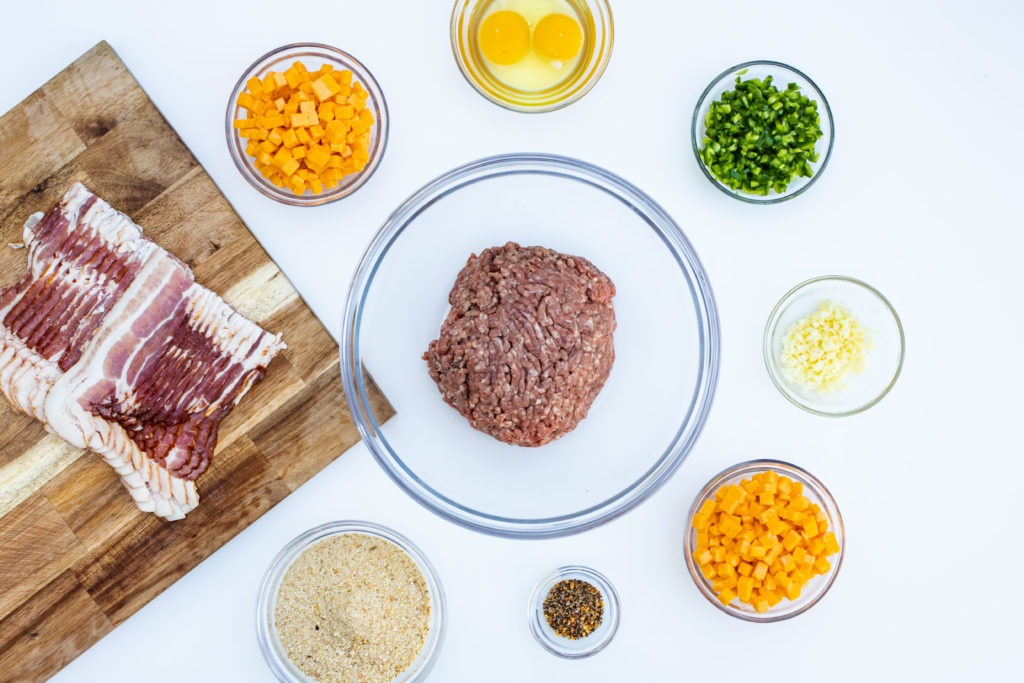
Instructions
- Preheat your smoker to 275°F (135°C)
- Combine the beef, breadcrumbs, eggs, garlic, cheese, diced peppers, and steak seasoning in a large bowl.
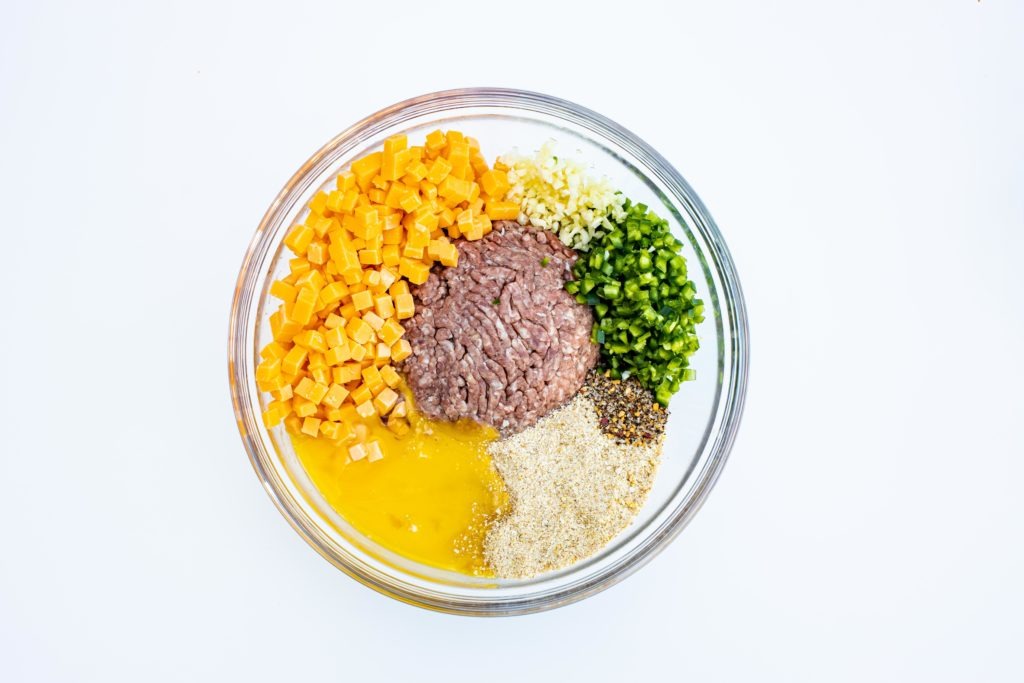
- Mix the ingredients until just combined and holding together a little bit. Overmixing will change the meatballs’ texture.

- Form the mixture into balls that are approximately 1.5″ in diameter.
- Wrap each ball in one of the halved bacon slices, securing the slice with a toothpick.

- Place the meatballs directly on the grate of your smoker and smoke.
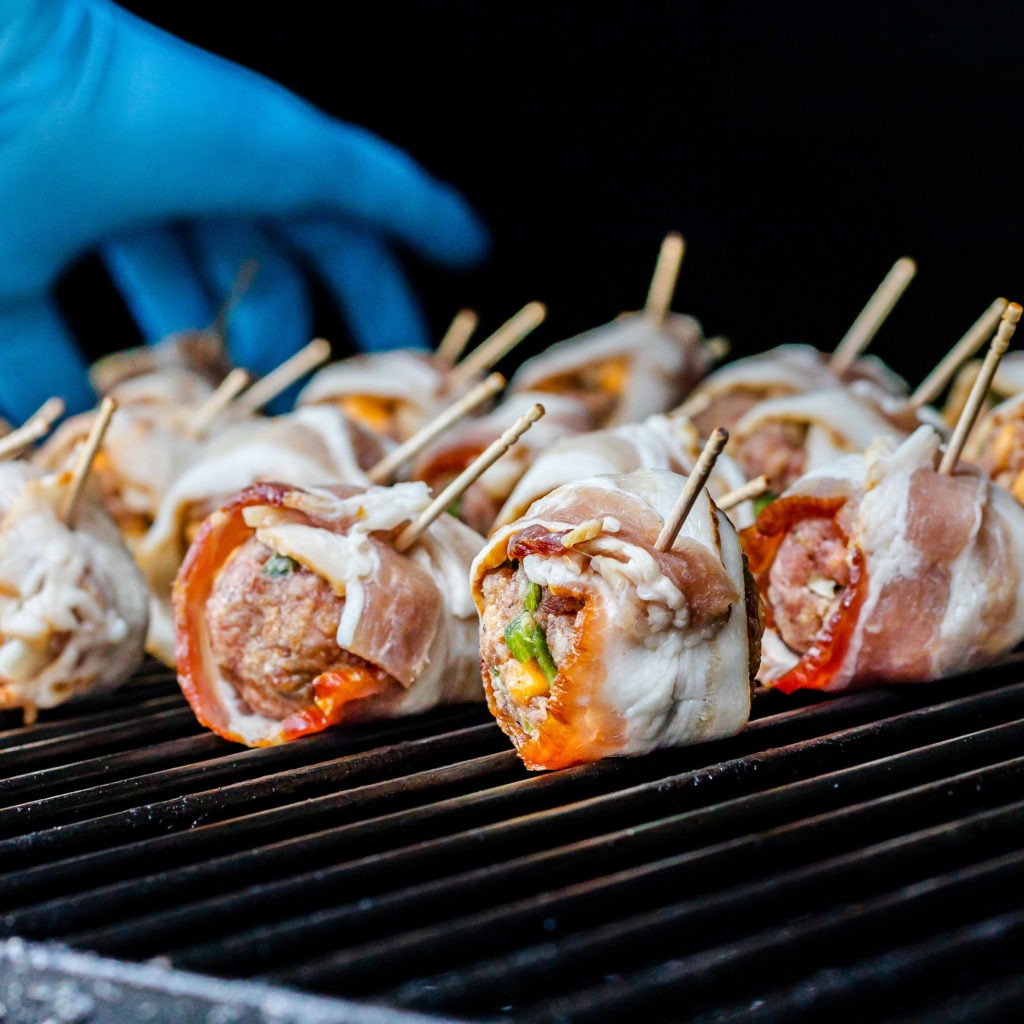
- When the meatballs reach an internal temperature of 155°F (68°C) (start checking their temp with your Thermapen® after about 35 minutes), brush them with BBQ sauce and continue cooking until they reach 165°F (74°C) in their centers, as measured by your Thermapen—another 5–10 minutes.

- Remove the meatballs from heat and discard the pinning-toothpicks.
- Serve!
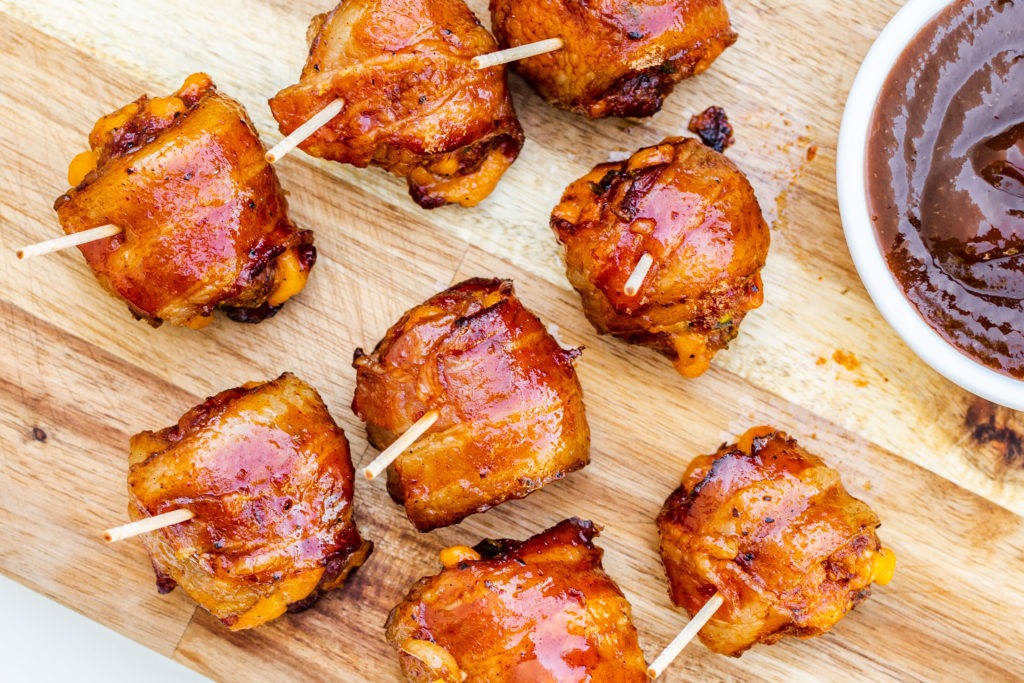
With a little practice, you can quickly create your own arsenal of delicious meatballs for any cuisine, any occasion. Just remember that how you mix them is important and how you cook them is critical. Check your meatballs temperature to make sure you get to 165°F (74°C) with a Thermapen® to make sure they are safe to eat but have not dried out. Then, even if you’re not going into the catering business, you’ll certainly be ready to share tasty, meaty bites, no matter the occasion.
Shop now for products used in this post:


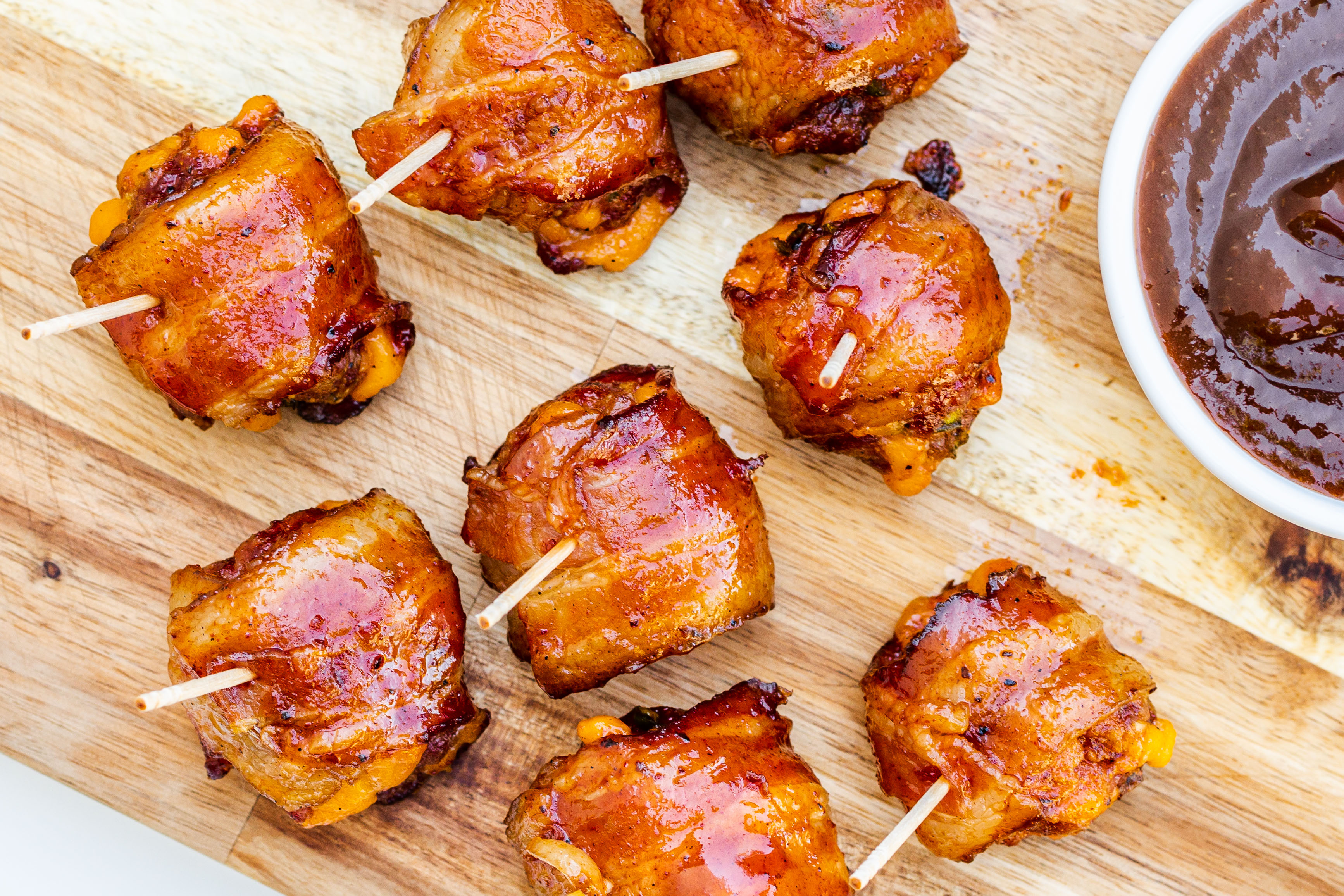

Is there a way to pre- smoke then reheat to use later
Dave,
Sure! Cook them as stated here, then freeze them spaced out on a tray. Once frozen, put them into a tight-sealing freezer bag. When you want them, thy only need to be warmed up, not fully cooked again. If I were doing this, I’d incorporate a little (1/4 cup?) of milk into the recipe to ensure they don’t dry out on the second warming.
Great looking recipe sure love our Thermapens and our Smoke. Keep up the great work!
I do believe that the meat balls should be 1″ in diameter rather than 1.5″.
I cooked using the recipe as presented. Turned out excellent! Used a digital scale and each meatball was 2 oz. +/- Used Apple wood for the smoke. Finished in the broiler to crisp up some of the less cooked bacon. Wow! Will add diced onions next time.
Nice!
Yesterday doubled the recipe, added more garlic, more jalapeños, and added sautéed onions. Now even more flavor!